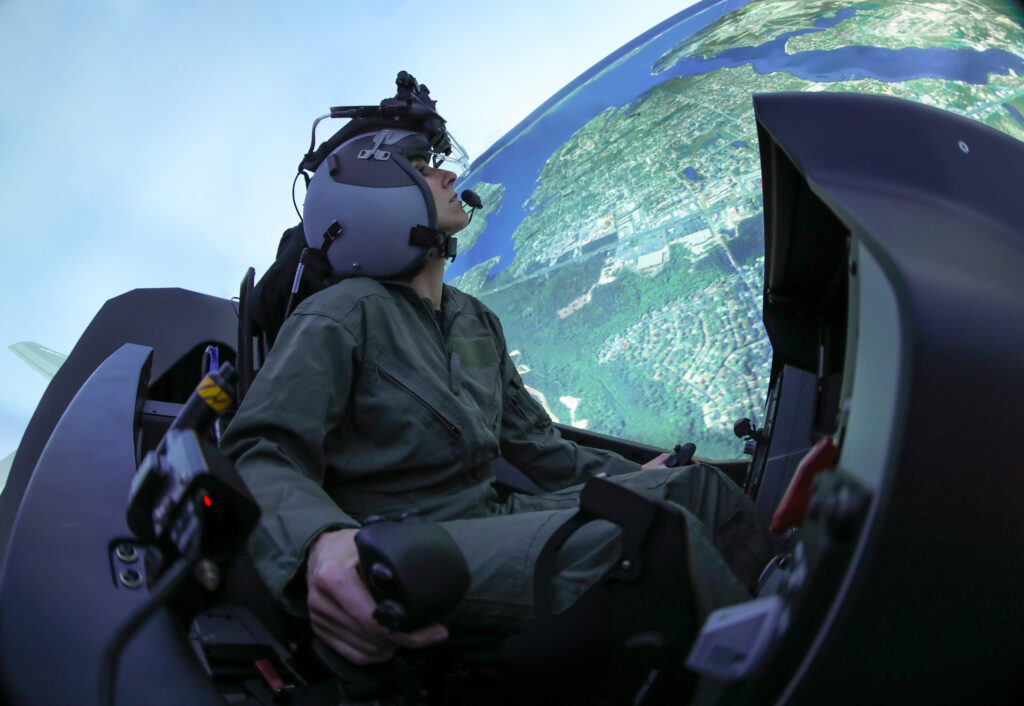
F-35 training simulator
WASHINGTON: Pentagon leadership has noted a “darkening mood in Beijing” as the communist government races forward with its massive military buildup to bolster its economic influence in the region, a top DoD official said Monday.
Using copied and stolen commercial technologies to fuel that growth, “China has re-armed and is growing very rapidly militarily,” while “at the same time, they’re investing in the underlying technologies necessary to use modeling and simulation as a force enabler,” said Alan Shaffer, deputy undersecretary for acquisition and sustainment.
New generations of Chinese fighter jets, ballistic missiles, precision weapons, and increasingly capable classes of warships garner most of the attention when assessing Chinese military capabilities. But the key to pushing those innovations into the future, however, will be how data is processed and how new, advanced and experimental weapons systems are modeled and tested in laboratories to get them into the field more quickly and at less cost.
It’s something the Chinese have pushed as the core of its defense strategy, often using stolen US technologies. “China has demonstrated the ability to go very fast and operate in ways that do not conform with internationally accepted standards,” Shaffer said.
China is specifically targeting innovation in digitization to include 5G networks, artificial intelligence and data centers, to name a few. They’ve also targeted growth in microelectronics through the Semiconductor Manufacturing International Corporation, a state-owned semiconductor foundry. Through these efforts, “China is investing in all the enabling technologies needed for advanced modeling and simulation,” Shaffer said.
“Data is the new oil for the international economic order,” Shaffer told the virtual audience during the annual ITSEC training and simulation conference. “The shift to a digital world opens a growing competition for great powers, and we should be able to do a much better job in assessing platform ability to be fit for purpose.”
“We have to figure out how to do things better,” Shaffer said, “the confluence of GDP growth and debt means that the US needs to continue to look to innovate modeling and simulation and other high payoff areas. Think about software that will allow us to support acquisition development, training of troops, and test all simultaneously.”
A full 90% of the data created in human history was created in the last two years, and “by 2020 there will be one trillion objects connected worldwide, and 66 percent of the world is connected at any one time,” Shaffer added. New and advanced simulation technologies should be designed to “reduce acquisition cycle times, reduce cost and schedule,” for all new programs.






















